As an experienced traveler, I know the importance of staying charged and linked while out and about.
Portable chargers have become essential for me. They keep my phone charged, especially when traveling outside. One question I get asked often, especially from friends.
Are batteries and power banks allowed in hand luggage on Flights?
The short answer is yes, you can. I take a variety of chargers, batteries, and portable power with me when I move around the travel. But I never faced significant issues.
In this guide, I will share my real-world experience and expert knowledge. Let’s go to start.
What types of portable chargers are allowed in hand luggage?
I always carry a portable charger in my hand luggage. I’ve been through many airports and have experience with what is and isn’t allowed. The good news is most standard portable chargers are allowed in your hand luggage.
What to look for
When choosing a portable charger for your travels, look for:
- A lithium-ion battery under 100Wh. It is the maximum capacity allowed on planes according to TSA and IATA regulations. This range’s Chargers will be marked as “flight safe” or “airline compliant.”
- •A solid, durable design. Look for a charger that can withstand being jostled around in your bag and tightly packed spaces. I prefer chargers with an aluminum casing.
- Multiple USB outputs. When traveling, it’s ideal to have a charger that can charge multiple devices at once. This way, you can keep all your electronics powered on the go.
My recommendations
Some highly-rated, TSA-compliant chargers I’ve used and can recommend are:
- The Anker PowerCore 10000 PD is a small and quick charger that works well for phones and smaller gadgets
- The Mophie Powerstation PD charger can simultaneously charge two devices, even tablets. Rugged and durable.
- The RAVPower AceSeries 22000mAh is perfect for long trips. It has enough power to recharge your phone and other gadgets multiple times.
Never search for an outlet or drain your phone’s battery with a portable charger in your hand luggage.
Choosing the Right Portable Charger for Travel
Your trusty portable charger is your companion in keeping your devices alive on the road. Your Portable power bank chargers is your best friend when you’re on the go and must keep your gadgets charged. But there are so many choices that picking the right one can take a lot of work.
Do not be afraid, fellow travelers! This guide will help you choose the perfect portable charger for your adventure.
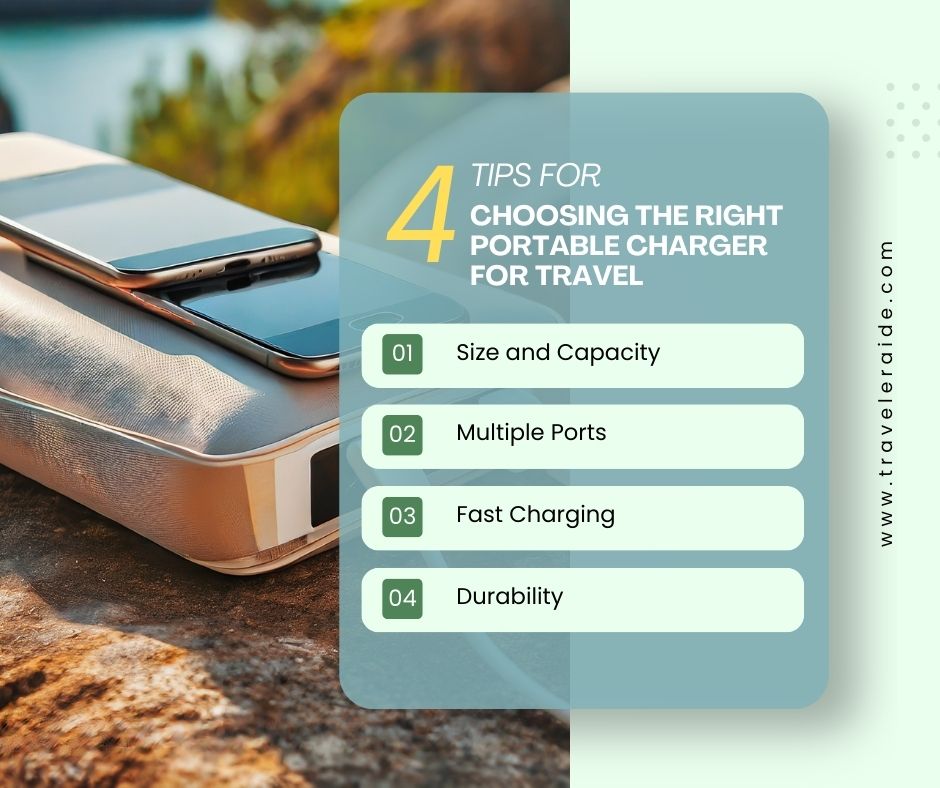
Size and Capacity
I prefer a compact yet high-capacity charger, around 10,000 mAh for flying. It will recharge most smartphones multiple times and even partially charge a tablet. Anything too bulky is annoying, while lower capacity lasts only a while. I also chose a lightweight charger, avoiding heavy or clunky models.
Multiple Ports
Having more ports is excellent. I can charge many devices at the same time, like my phone, headphones, smartwatch, and my friend’s machine. At a minimum, look for a charger with two high-speed USB ports for maximum flexibility.
Fast Charging
With long travel times, fast charging is a must. I look for chargers that have Power Delivery (PD) or Quick Charge (QC) technology. These chargers can give me hours of charge in just a few minutes. This way, I’m not stuck in one place waiting around and can get out exploring sooner!
Durability
My charger goes everywhere with me, so durable and rugged construction is essential. I chose a charger with an aluminum or hard plastic case, sealed ports, and no loose or dangling parts. It protects against drops, spills, and travel’s general wear and tear.
I am confident that my devices will have power with a reliable portable charger during my travels. It charges quickly and has many ports.
How to Pack Your Portable Charger in hand luggage
Ensure that you pack your portable charger and have it ready to stay connected on the go. But properly packing it can be confusing when you have specific rules and limits.
So, Here’s a guide to Pack Your Portable Charger in hand luggage
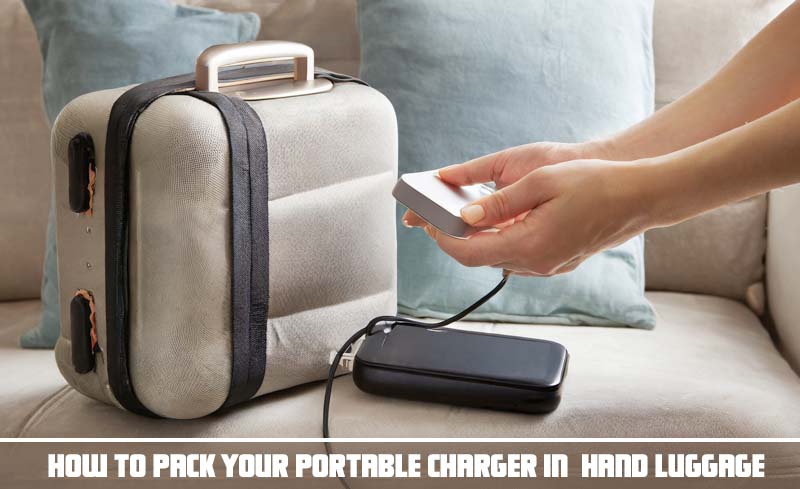
Choose a charger approved for air travel
The first thing you must do is choose an airline-approved portable charger for hand luggage. Chargers with lithium-ion batteries up to 100 watt hours (Wh) are allowed. Anything higher could be confiscated by security. I like chargers with around 10,000 mAh, like the Anker Power Core 10000. It can charge a phone many times and is below the 100 Wh limit.
Pack the charger in your item
I always pack my portable charger in my items, like a backpack or laptop bag, rather than my carry-on suitcase. It makes it easy to remove when going through security. It also lets me easily access it during layovers or flight delays to recharge my devices. Security might ask you to take the charger from your bag for a separate scan.
So, please keep it in a front pocket you can easily reach.
Have cables handy
Remember also to pack the charging cables you need for your devices! I carry a line with different connectors for different devices when I travel. It’s frustrating when you have a charged portable charger but can’t connect it to your device.
Consider a charger with an AC outlet
If you do a lot of international travel, consider a portable charger with an AC power outlet, like the Omni 20+. You can connect devices directly and charge the power bank by plugging it into a wall outlet or USB port on a plane seat. It’s very convenient when outlets and charging standards differ in other countries.
Follow these tips to get through airport security with your portable charger quickly. It keeps your electronics powered up on your trip.
TSA Guidelines for Portable Chargers
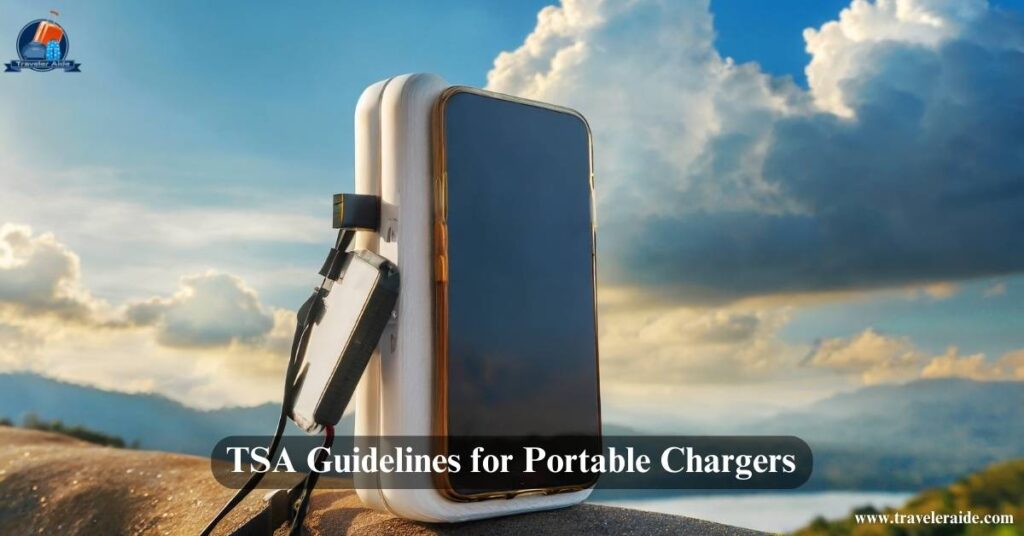
I love to travel and have carried many portable chargers through airport security. The good news is, yes, you can pack portable chargers in your hand luggage according to the TSA guidelines.
But, there are some rules you need to know to have an easy time at security.
The TSA allows portable chargers, power banks, and external batteries in carry-on and hand luggage. But, if your portable charger is too big (more than 26,800 mAh), it might need to be checked.
It could take a few extra minutes during security checks. I prefer to stick to chargers under 20,000 mAh to avoid this potential hassle.
It would help if you took out portable chargers from your carry-on bags. Then, put them alone in a bin for X-ray screening. Make sure your charger is easy to reach in your bag or pack. This way, you can quickly take it out at the security checkpoint. Refrain from burying it under layers of clothes or other gear where it will be difficult to retrieve.
Specific portable chargers may need extra screening or testing to check if they meet battery requirements. It could add 5-10 minutes to your time at the checkpoint. I recommend using a name-brand portable charger and keeping it in the original packaging or a clear plastic bag to avoid delays. Clearly label it as a “portable charger” or “power bank” if the TSA agent is unfamiliar with the device.
Follow these TSA guidelines for portable chargers and be prepared. You can confidently bring your portable charger in your hand luggage.
Tips for Packing and Using Portable Chargers on Flights
Portable chargers are essential to have when traveling. But, it can be hard to understand the rules for using them on flights.
This guide will help you pack and use your portable charger safely and efficiently on your next trip.
Choose a TSA-approved charger.
When you bring a charger, it must follow the TSA’s rules for portable electronic devices. Generally, this means the capacity is 100 watt-hours or less for lithium-ion batteries. I like chargers with a capacity of 10,000 mAh. These chargers can give my phone 2-3 full charges and still meet the guidelines.
Pack it in your carry-on
Always pack your portable charger in your carry-on luggage, not checked baggage. If you put the charger in checked baggage, it might get too hot. Also, if your checked bags get lost, you won’t be able to charge your devices. I’ve had checked bags delayed for days before, so keep chargers in your carry-on.
Fully charge before boarding
Charge your portable charger fully before heading to the airport. Charge your devices fully to ensure enough backup power during your flight. This way, you’ll be prepared if charging ports on the plane or in the airport are limited or not working. Nothing’s worse than having a dead phone with hours left on your flight!
Use airport charging stations if needed.
Feel free to use charging stations in the airport to charge your devices before boarding. I always arrive early for my flight, about 90 minutes before. It gives me time to find charging stations and prepare my gear before boarding the plane.
Double-check with the flight crew about in-seat charging
If you’re on a long flight, ask the crew if your seat has charging options. If so, you can set your devices during the flight and conserve your portable charger’s power. But, on budget airlines, in-seat charging is less common, so I don’t count on having it available.
By following these tips, you can have maximum power for your devices while traveling. Safe travels and happy charging!
Conclusion
I’ve carried portable chargers with me many times. You can take portable chargers in your hand luggage.
Follow these tips and choose a suitable portable charger. Also, Check with your airline for any extra rules about portable chargers.
Remember, choosing the correct charger depends on your needs and travel style. To find the perfect fit, look at size, capacity, charging speed, and durability. Pack your charger wisely in your carry-on luggage, keeping all necessary cables handy. When you’re on a flight, make sure to follow the rules. You can still use portable chargers.
Let me know if you have any questions about navigating airport security with your tech gear. I’m always here to share my experiences and tips.

Hey, I’m Dorothy E. Turner! I’ve spent years exploring the world and diving deep into the travel scene. Along the way, I’ve developed a real knack for understanding what makes a great travel backpack. I’m passionate about sharing my expertise to help fellow travelers find the perfect backpack for their adventures.

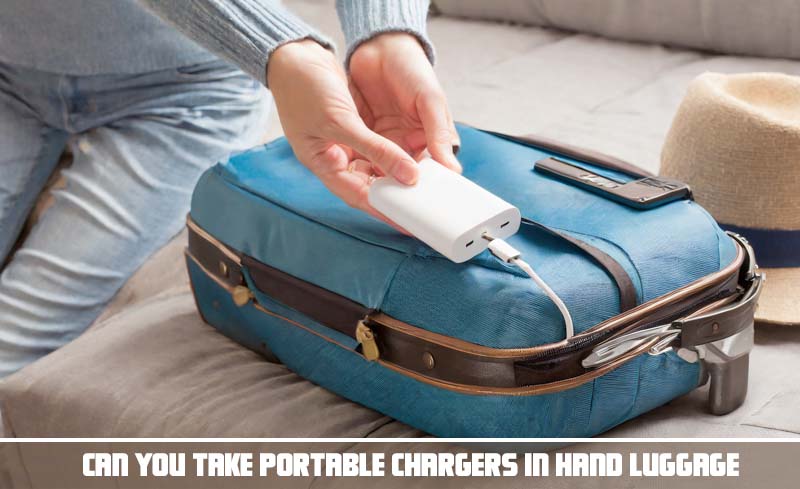
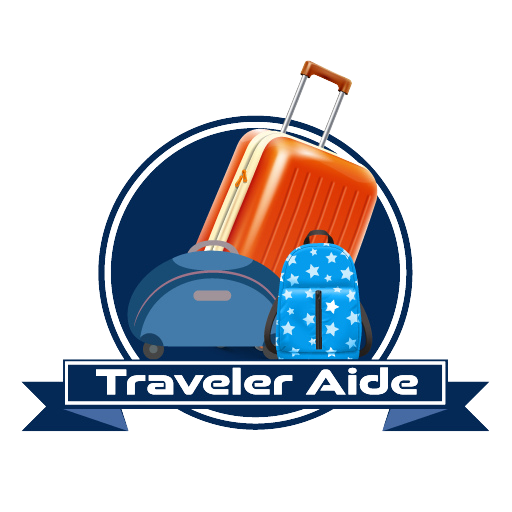
4 thoughts on “Can You Take Portable Chargers In Hand Luggage”